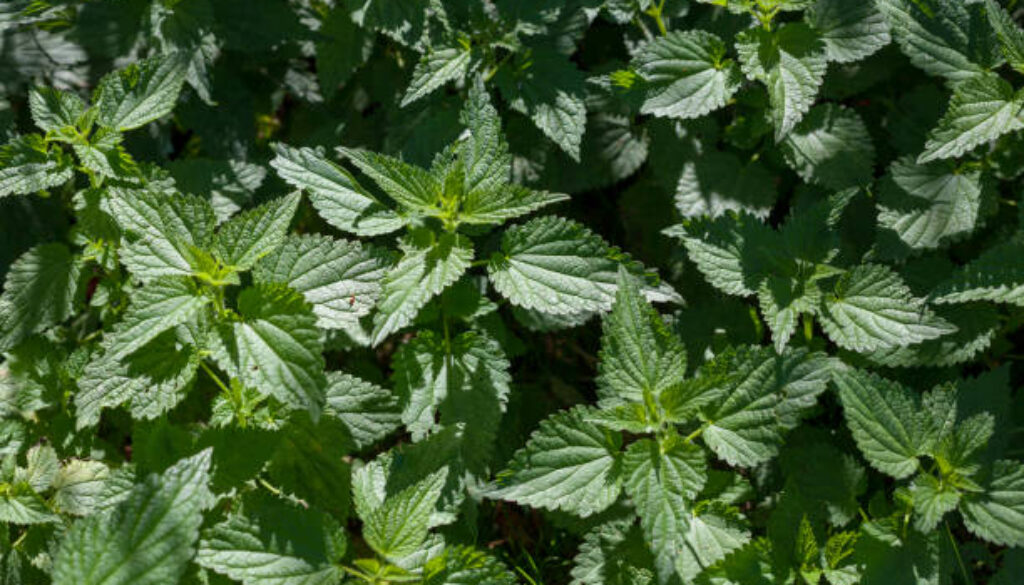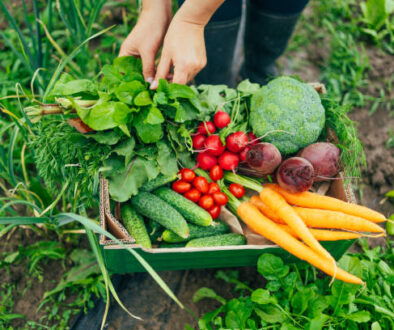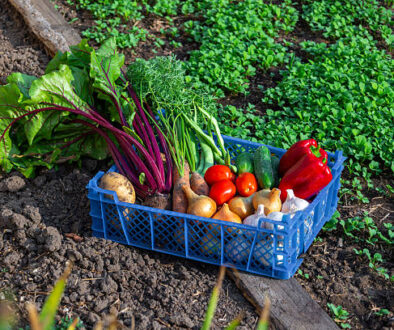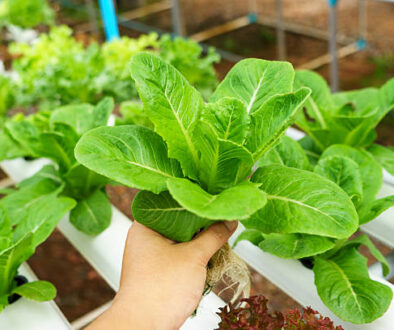5 Medicinal Plants You Should Plant This Fall
When the crisp air rolls in and the leaves start turning golden, many of us think about cozy sweaters, pumpkin spice, and maybe cleaning up the yard before winter.
But here’s a little secret: your fall garden doesn’t have to wind down.
In fact, this season is the perfect time to grow something even more powerful: medicinal plants that can support your health and make your garden more useful than ever.
I’m talking about turning your backyard into a little medical garden, a place where you grow your own healing herbs and healing plants that you can actually use daily.
Imagine stepping outside, picking a leaf, and making a soothing tea for digestion, or harvesting roots that calm a cough in winter. Pretty amazing, right?
Well, let’s walk through five of the best medicinal herbs to plant in the fall, plus some simple garden companion planting tips to make sure your plants thrive.
By the end, you’ll be ready to start your very own herbal medicine garden that feels both practical and magical.
Why Plant Medicinal Herbs in a Fall Garden?
Most people think of spring as the season for planting, but fall has its own secret advantages.
The soil is still warm from summer, the air is cooler, and weeds grow less aggressively.
This creates a perfect environment for medicinal plants to establish strong roots before winter.
And, starting in the fall means your healing herbs are ready to give you their benefits sooner in the next growing season.
It’s like getting a head start on your herbal medicine garden while everyone else is waiting for spring.
And let’s be honest, there’s something deeply satisfying about knowing your fall garden isn’t just decorative, but also useful for your health.
Think of it as nature’s pharmacy, right in your backyard.
1. Echinacea – The Immune Booster
If you’ve ever sipped an herbal tea for immunity, chances are it had echinacea in it.
This beautiful purple flower is one of the most popular medicinal plants in North America.
Why Plant It in Fall?
Planting echinacea in your fall garden allows the roots to settle in and strengthen over winter. By next summer, you’ll have sturdy plants ready to bloom.
How It Helps:
Echinacea is widely used as a natural remedy for colds and flu. Many people believe it helps shorten the duration of illness and supports the immune system.
Companion Planting Tip:
Echinacea pairs beautifully with other healing plants like lavender and yarrow. Together, they attract pollinators and create a strong healing herbs garden ecosystem.
2. Garlic – Nature’s Antibiotic
Garlic isn’t just for cooking—it’s a powerhouse in any medical garden. And fall is hands-down the best time to plant it.
Why Plant It in Fall?
Garlic loves the cold. When planted in autumn, it establishes roots before the ground freezes. By next summer, you’ll be pulling up big, flavorful bulbs.
How It Helps:
Garlic is often called nature’s antibiotic. It supports heart health, boosts immunity, and has natural antibacterial and antifungal properties. A true must-have for your herbal medicine garden.
Companion Planting Tip:
Garlic is excellent for garden companion planting. It repels pests that might attack roses, fruit trees, or even strawberries. Planting garlic near your other medicinal herbs gives them extra protection.
3. Chamomile – The Calming Healer
Who hasn’t sipped a warm cup of chamomile tea to relax before bed? This gentle flower is one of the most soothing healing herbs you can grow.
Why Plant It in Fall?
Chamomile loves cooler weather. Planting in fall means you’ll get a jumpstart on strong, healthy plants when spring comes.
How It Helps:
Chamomile is a go-to herb for stress relief, better sleep, and calming upset stomachs. It’s also great for skin care—many people use chamomile infusions to soothe irritation.
Companion Planting Tip:
Chamomile is a fantastic garden companion planting friend. It helps boost the health of nearby plants like basil, mint, and even cabbages. It’s like having a gentle nurse in your medicinal herbs garden.
4. Lemon Balm – The Happy Herb
Lemon balm is one of those healing plants that makes your whole garden smell like sunshine. It’s part of the mint family and has a fresh lemony scent that lifts your mood instantly.
Why Plant It in Fall?
Planting lemon balm in autumn gives it time to spread and root well. Be warned, though—it can grow fast, so give it space in your fall garden.
How It Helps:
Known for calming the nerves, improving sleep, and even easing digestive issues, lemon balm is one of the most versatile medicinal herbs out there. Some people even use it to help with focus and clarity.
Companion Planting Tip:
Lemon balm attracts bees and other pollinators, which makes it a great ally in garden companion planting. Put it near plants that need extra pollination power.
5. Calendula – The Skin Soother
Bright orange and yellow, calendula looks like sunshine in flower form. But beyond its beauty, this flower is one of the most powerful medicinal plants for the skin.
Why Plant It in Fall?
Calendula thrives in cool weather, so planting in fall sets it up for strong blooms. Plus, it adds cheerful color to your fall garden when many plants are fading.
How It Helps:
Calendula is often used in salves, creams, and teas for its soothing effects on the skin. It helps with cuts, burns, and even acne. Having this flower in your herbal medicine garden is like having a natural first aid kit.
Companion Planting Tip:
Calendula is a superstar in garden companion planting. It repels unwanted pests like aphids and nematodes, while drawing in pollinators. It’s both beautiful and practical for any medical garden.
Creating Your Own Herbal Medicine Garden
Now that you know which medicinal herbs thrive in a fall garden, let’s talk about making it all work together.
Choose Your Space
You don’t need a huge backyard to start a herbal medicine garden. A small raised bed, a few pots on the patio, or even a windowsill can be enough. The key is sunlight—most healing plants love at least six hours of sun.
Think About Companion Planting
Smart garden companion planting makes your herbs healthier and easier to grow. For example:
- Garlic helps repel pests.
- Chamomile improves the health of nearby herbs.
- Calendula protects vegetables and herbs while brightening up your medicinal herbs garden.
Harvest and Store Carefully
The beauty of a medical garden is using what you grow. Dry herbs for teas, infuse oils for balms, or make simple tinctures. Label everything so you remember which healing herbs are which.
Why Healing Herbs Matter
There’s something deeply grounding about growing healing plants.
They connect you to the earth in a way that supermarket shelves never will.
Your herbal medicine garden isn’t just about plants—it’s about lifestyle. It’s about slowing down, caring for yourself naturally, and making your fall garden more than just pretty.
Think of it like this: every time you step outside to snip a bit of lemon balm for tea or harvest garlic for dinner, you’re building a tradition of self-care rooted in the soil.
Your medicinal herbs garden becomes a place of wellness, one leaf and petal at a time.
Conclusion
This fall, instead of letting your garden fade into winter, why not plant something that will keep giving back? With echinacea, garlic, chamomile, lemon balm, and calendula, your fall garden transforms into a living medical garden—one filled with healing herbs, powerful medicinal plants, and natural beauty.
Add in smart garden companion planting, and you’ll not only have healthier plants but also a thriving ecosystem right outside your door.
So grab your gloves, pick your spot, and start building your own herbal medicine garden this season. It’s simple, rewarding, and honestly, a little magical. 🌿
FAQs
1. Which medicinal plants grow best in a fall garden?
Some of the best medicinal plants for a fall garden include garlic, echinacea, chamomile, lemon balm, and calendula. These healing herbs handle cooler weather well and will establish strong roots before spring. Planting them in autumn also helps you get a head start on your herbal medicine garden for the next growing season.
2. Can I grow a medical garden in a small space?
Absolutely! A medical garden doesn’t need acres of land. Many healing plants and medicinal herbs grow beautifully in pots or raised beds. Even a few containers on your balcony or patio can become a mini herbal medicine garden. The key is giving your plants plenty of sunlight and using garden companion planting techniques to keep them healthy.
3. How do I use healing herbs from my garden?
It depends on the herb! Some healing herbs like chamomile and lemon balm make wonderful teas. Garlic can be added to meals for both flavor and health benefits. Calendula can be infused into oils or made into salves for the skin. With a little research, you’ll find simple ways to use your medicinal herb garden for everyday wellness.
4. What is garden companion planting, and why is it important?
Garden companion planting is when you grow certain plants together so they help each other thrive. For example, garlic repels pests, chamomile improves the health of nearby herbs, and calendula attracts pollinators. When you use this method in your fall garden, your medicinal plants stay healthier, and your herbal medicine garden becomes more productive.



